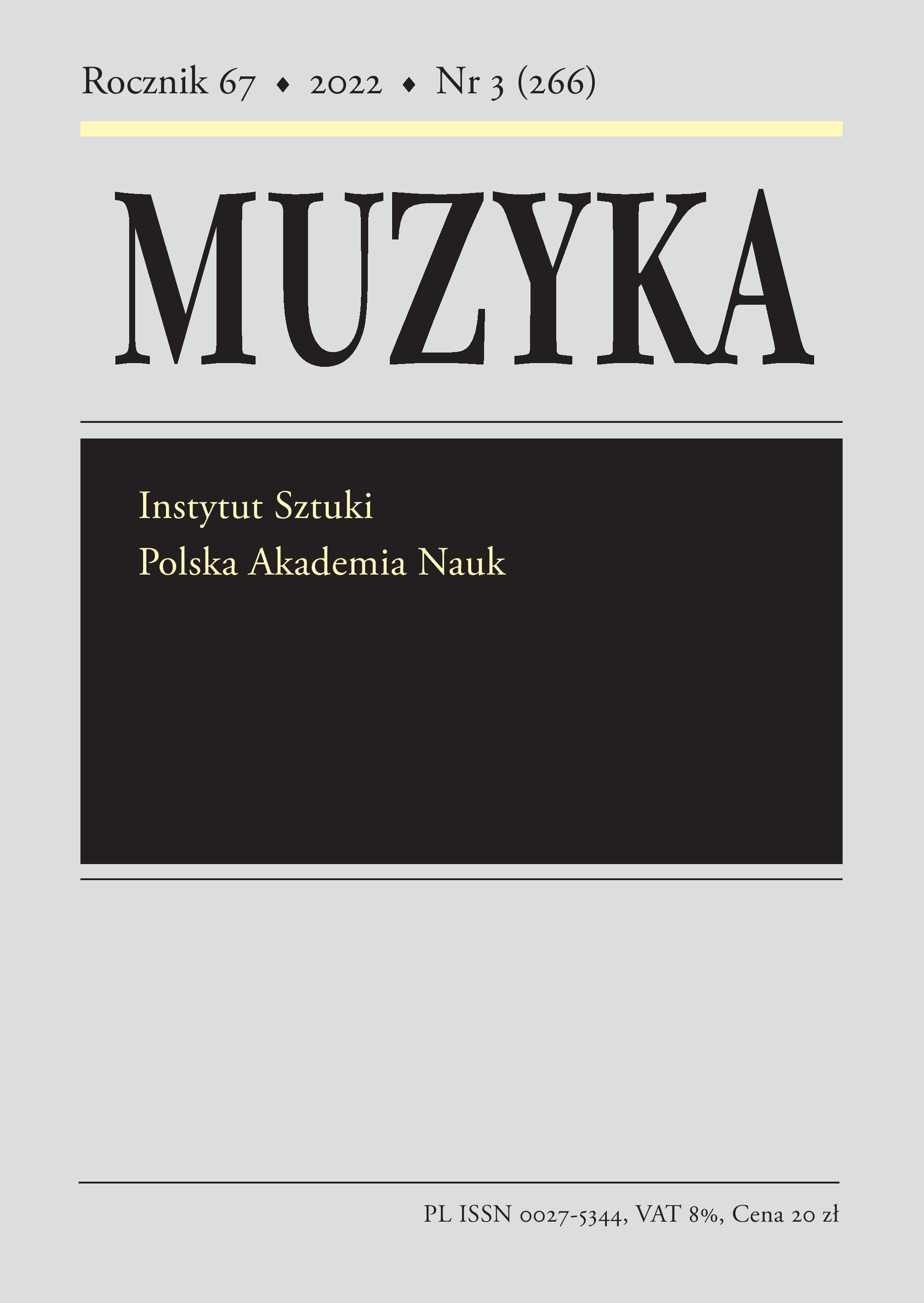Uwagi o melodii, formie i dziejach staropolskiej pieśni „O przenasławniejsza Panno”
Remarks on the Melody, Form, and History of the Old Polish Song ‘O, Most Famous of Virgins’
Author(s): Jakub KubieniecSubject(s): Music, Sociology of Religion
Published by: Instytut Sztuki Polskiej Akademii Nauk
Keywords: Polish medieval songs; Jan of Lublin Tablature; Jan Seklucjan; Old Polish Marian songs; O, Most Famous and Pure Virgin; Protestant songs; Czech songs
Summary/Abstract: The medieval Marian song ‘O, Most Famous and Pure Virgin’, first published by W.A. Maciejowski, has also been fragmentarily preserved, in a slightly different version, in the files of B. Erzepki (published by W. Wydra). A third unpublished record comes from the 1586 ‘Staniątki Cantional’. Despite its irregular structure, the song was sung in sixteenth-century Polish churches, as confirmed by, among others, the founding act of the Mielec provostry (1526), and by two organ settings found in the Jan of Lublin Tablature. The vocal versions of these settings reconstructed by H. Feicht and J. Węcowski, with the song melody quoted in the tenor, may raise serious doubts, among others because the tablature copyist’s clues concerning the formal pattern of the piece are unclear. Records of the song ‘O, Most Famous Word of God’ published in all editions of Jan Seklucjan’s Cantionals (1547, 1550, 1559) can help to reconstruct the Marian composition. The publisher of these Cantionals, Piotr Poźniak, found no concordances of this song in other Polish, Czech, and German sources. However, the melody was undoubtedly borrowed from the Marian song ‘O, Most Famous and Pure Virgin’. The Protestant contrafactum preserves the incipit of the Catholic piece and quite likely had a polemical undertone, as it opposed following the Word of God to the Marian cult. The records contained in Jan Seklucjan’s Cantionals make it possible to establish the original versification of the Marian song (which consisted of six verses, not seven, as in Maciejowski’s edition) and to correct the apparently misleading performance indications found in the tablature. Though to date no model has been discovered for this Marian piece, it may have been inspired by the melody of the song ‘Depromemus laudes’, whose earliest source is in the Franus Cantional (1505). At the end of the paper, the author presents a reconstruction of ‘O, Most Famous and Pure Virgin’ based on Seklucjan and the Jan of Lublin Tablature, as well as a transliteration and transcription of the Staniątki source.
Journal: Muzyka
- Issue Year: 67/2022
- Issue No: 3
- Page Range: 33-51
- Page Count: 19
- Language: Polish

